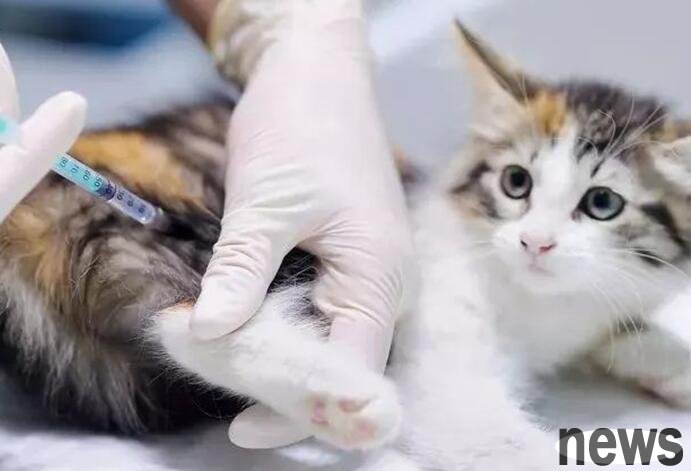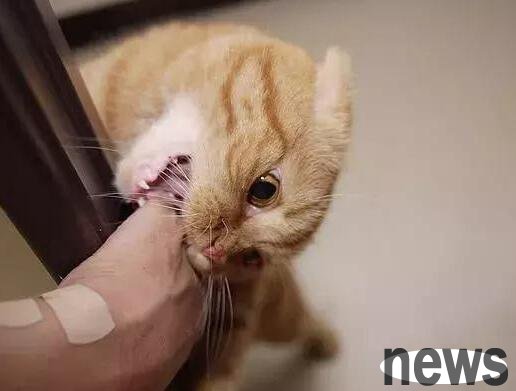What is rabies?
Rabies is a virus that negatively affects the central nervous system of mammals. It is almost always fatal, and death usually occurs within a week after symptoms appear. The disease is transmitted through bites from infected animals. It is a zoonotic disease, which means it can be transmitted to humans through animals. If bitten by an animal with rabies, humans will be as susceptible to the virus as animals. Most cases involve non-domesticated animals such as skunks, raccoons, and bats. Domestic pets such as cats and dogs may also be infected.
Symptoms of rabies
Rabies has multiple symptoms, and not every infected animal has all symptoms. The first sign you may see may be that your cat's behavior has changed;
1, it may become withdrawn, anxious, shy, or scared.
2. Your pet may also lick and bite the wound. These initial symptoms may lead to more behavioral changes such as irritability, excitement, difficulty walking, and atypical responses to noise and sight. The symptoms of "blistering in the mouth" commonly associated with rabies are caused by muscle paralysis responsible for swallowing and vocalization. This prevents the cat from swallowing, so there will be too much "foam" saliva.

Rabies transmission
When an animal or person is bitten by an infected animal, saliva spreads the disease into the brain through the nerves and spine. In the absence of any symptoms, the incubation period is 3 to 24 weeks. Once the brain is infected, the rabies virus will replicate to the salivary glands and the symptoms will begin to appear. In rare cases, the virus can be transmitted through the eyes, nose or mouth. Bite is the most common way of spreading the disease.
Diagnosis of rabies
To determine the degree of attention of cats to rabies virus, the veterinarian will look for signs of symptoms and view the cat's medical history. However, a clear diagnosis can only be confirmed after animal death by brain tissue samples and direct fluorescent antibody test (dFA). Humans can diagnose by testing saliva, hair, skin and blood samples, but these are not certain, and this type of test is not suitable for animals. If your cat has been exposed to rabies virus, it needs to be isolated so it can be identified when symptoms appear. This is especially true for unvaccinated pets. Any cat with symptoms will be euthanized.
Rabies Treatment
Rabies cannot be cured, and there is no way to treat the virus. Euthanasia is the only option when animals develop advanced rabies symptoms. Death is almost always the result of this disease, and euthanasia can prevent your pet from suffering and prevent the disease from spreading to other animals and humans.
When humans are exposed to rabies, they must start a treatment called post-exposure prevention (PEP). This treatment includes a range of injections of rabies vaccines and immunoglobulin. PEP will not work after signs of infection in humans. Even in humans, the disease is almost always fatal when symptoms occur.
Prevent rabies
1. Rabies prevention is very simple and is also the best way to prevent virus infection. Your cat should receive a routine rabies vaccine. The frequency of this routine varies between one and three years. Your veterinarian can explain the legal requirements for rabies vaccination and help you make the best choice for your pet.
2. There is also a human vaccine, but the guidelines and processes are different from those of animals. People who deal with wildlife or pets, as well as those traveling to high-risk areas of rabies, can get vaccinated.

3. After vaccination, keeping your pet away from rabies will help prevent the possibility of infection. Keep your cats in your sight when they are outdoors and don't let them roam in areas where wildlife is inhabited. Don't let your cat get close to animals you're unfamiliar with, and if your pet is indeed bitten by an animal, take him to the vet immediately.
It is also important to prevent human rabies. Teach your child to be cautious about animals. When a person is bitten by an animal, they should see a doctor immediately.
Get as much information about the animal as possible when an animal or human is bitten by an animal. You should obtain the owner’s contact information, pet vaccination history, and any rabies exposure that your pet may have been exposed to. If the bite comes from a wild animal, too much information may not be available, but the local health bureau must be notified.
Rabies is easily preventable, although it is a dangerous and deadly virus. Two of the most important things to remember;
1. Make sure your pet is vaccinated with routine rabies and always minimize exposure risk.
2. What is rabies, the symptoms, expected progress and outcomes, and how to prevent rabies will keep you and your entire family (pets and people) safe.
